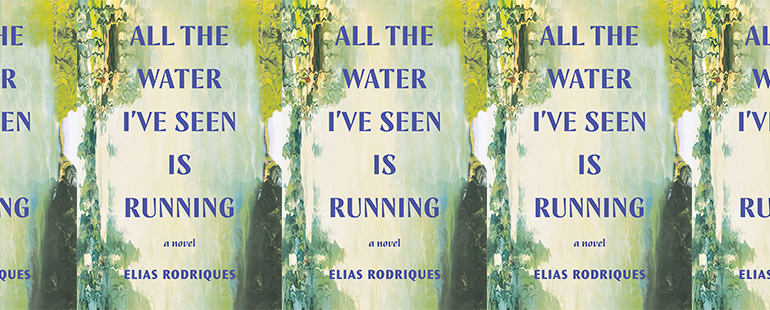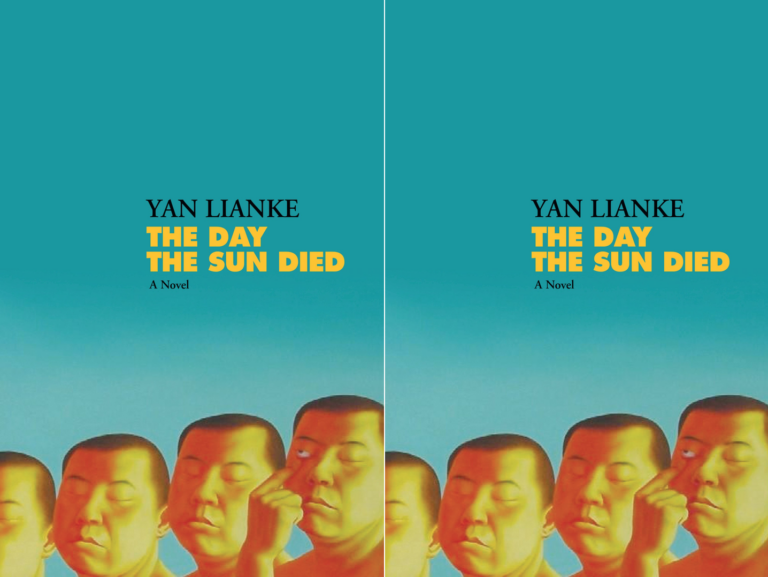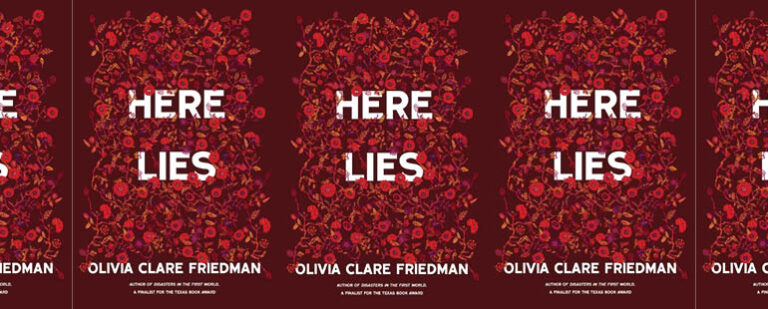Confronting the Past in Elias Rodriques’s Debut Novel

All the Water I’ve Seen is Running
Elias Rodriques
W.W. Norton | June 22, 2021
Elias Rodriques’s debut novel, All the Water I’ve Seen is Running, follows Daniel Henriquez, a mixed-race son of Jamaican immigrants, after the death of his friend Aubrey, a self-identified “southern cracker.” The unlikely pair had become fast friends, bonding especially over the fact that immediate members of their family are incarcerated—Daniel’s brother, Aubrey’s dad. After high school, Daniel leaves for college and then moves to New York City where he is openly gay and recently single, and Aubrey remains in Florida, not knowing Daniel had lied to his friends at home, saying he and her used to date back in the day. When Daniel learns that Aubrey has died in a car crash, all his memories of growing up, of the “old him,” come pouring back. From here, the novel breaks out into something far more interesting than a typical bildungsroman, a less clearly-charted story blossoming.
What starts as a linear coming-of-age story shifts as Daniel is forced to confront his past. He arrives in Florida, not really knowing why he has returned, and not feeling a right to grieve for Aubrey. He’s been gone and started a new life, so instead, he tries to fake interest in his old life to feel closer to Aubrey. Rodriques brilliantly captures this sensation of old lives feeling excluded from “new ones,” and how this is used to shape the narratives people that, like Daniel, tell themselves about their lives, which can be a very hard routine to extract oneself from.
During his visit, Daniel attempts to unify his new and old life. He and his close friend Desmond drink and toast to the past with old friends, and Daniel feels the need to apologize to all those around him, for having left home and begun a new, exciting life in a big city. He feels anxiety over having seen that the grass is greener on the other side, but still wanting to go back and stand on the patchy, yellow lawn he grew up on.
Soon after returning, Daniel’s own difficult family history begins to resurface, interspersed among events in his return. He remembers before he and his family moved to Florida: “After we moved out of Flatbush, I thought of it as the nights on the couch with Mom, the people I didn’t recognize on the streets, and the gunshots. I’m sure we had good times—days at the park learning how to play basketball and American football, buying bootleg movies on Flatbush Ave., and so many meals—but I mostly remember the fear.”
Daniel’s path through the novel is controlled by the fear of his past. He fears what people will say when they find out he’s gay, or that he lied about having dated Aubrey for so many years, or that his dad beat him in the past (“My father told me he loved me every night before he put me to bed, and then I lay awake afraid of him. I didn’t know the border between love and fear. Perhaps I still don’t.”) The novel shuttles between his family history and Daniel’s current thinking, shaped by dialogue between characters. This is where Rodriques thrives—capturing real, genuine human speech, the cadence of how one speaks at home with old friends, versus in their new lives, away from the memories. At one point, Daniel’s friend Desmond recalls working on a roadside trash-pickup crew with Aubrey after high school:
But then, out of the blue, she looks up at me and asks, What you going to do when you get out of here? So I say, If I get out of here. Hit her with the slickness, you know what I’m saying? Let her know the kid’s deep and hears her words and shit, but I can speak her language too. So I’m thinking she’s going to be impressed when she says, Ain’t no use talking about no ifs. That’s how you get stuck here. I should’ve said, You can get stuck here even if you think you going to get out, but I ain’t say nothing. So she says it again, How you getting out?
The novel at times drifts towards the kind of clichés that abide in fiction and coming of age stories—the need to get out, to make something of yourself, to escape the treacheries of a life you haven’t chosen. And yet, All the Water I’ve Seen is Running not only examines growing up, leaving home, changing, and then returning, but also examines how masculinity and maleness can ebb and flow depending on context—for Daniel, it is whom he is with and where he is. In rhythmic prose that belies the seriousness of the topic, Rodriques examines what it is to reconsider male friendship in adulthood, to balance newfound beliefs and acceptances, and to understand that who someone was as a teenager isn’t the person they are now.
In the end, Daniel’s fears of coming out to his friends aren’t realized: most of them had guessed years ago or don’t care now. The relationship between Desmond and Daniel, one that begins with hesitancy upon seeing each other again, eventually returns to a true male friendship of sorts, of desire to see each other succeed and emotional conveyance of who they are and what they mean to each other. At one point Desmond asks if Daniel has ever seen snow, because he hasn’t, that, per the title, all the water he’s ever seen is running, in the rivers and inlets that surround their town. It recalls a Shy Watson poem, which reads: “& you can’t step twice / into the same river / unless you do / but then / it’s uncomfortable/the soggy socks . . .”This is the lesson gleamed by Daniel. After getting his socks soggy a couple of times, he learns, as one does, that returning isn’t the same as replicating, or redoing— it’s just returning, and it’s new each time, and no one will blame you if it took a couple of tries to figure out your socks could stay dry.


